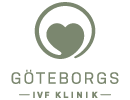The treatment process for IVF
1. First visit. During the first visit, you will meet with one of our experienced specialist doctors in reproductive medicine. We will review your previous investigations and any previous treatments and discuss your situation. Based on this, we will assess if there is a need for any additional or updated investigations and establish a treatment plan. It is helpful if you have thought about when you would like to start your treatment before the visit, as we will decide on a preliminary start date for the treatment in consultation with you. The timing of the treatment also depends on the woman’s menstrual cycle.
2. Initiate hormone treatment. To increase the chances of pregnancy, hormone treatment is always used in conjunction with assisted reproduction, and sometimes also in intrauterine insemination (IUI) treatment.
The hormone treatment stimulates the growth of multiple ovarian follicles and promotes their development. This leads to the maturation of multiple eggs in the ovaries. The number of follicles that develop primarily depends on your ovarian reserve. Your doctor will prescribe the appropriate dosage of medication and plan the duration of hormone injections. At the clinic, you will be taught how to administer the hormone injections yourself, and afterwards, you will continue to take them at home every day. There are also informative instructional videos available at medicininstruktioner.se that demonstrate the process. You will have a scheduled ultrasound appointment with your doctor after a certain number of days of taking the injections to monitor the growth and size of the follicles. Depending on your individual response, as observed during the ultrasound, we may adjust the hormone dosage if necessary.
When the ovarian follicles have reached an adequate size, the doctor will schedule the egg retrieval procedure. Sometimes, an additional ultrasound examination is needed to ensure that the follicles have fully matured and are ready to be retrieved.
3. The ovulation trigger shot, once the follicles have fully matured, the eggs are ready to be retrieved, and you will be given a specific time to administer an injection of an ovulation hormone. The ovulation hormone is crucial as it helps the eggs mature. It is important to take the injection at home at the exact time you are instructed by us. If you forget to take the ovulation trigger shot, the eggs cannot be retrieved at the scheduled time.
4. The egg retrieval is scheduled approximately 36 hours after the ovulation trigger shot, during which the matured eggs can be retrieved from the ovaries. During the egg retrieval, which takes about 15 minutes, you will receive pain medication and local anesthesia. The eggs are retrieved using ultrasound guidance and a thin needle inserted through the vagina. The follicles containing the eggs are closely packed together, so usually one puncture on each side is sufficient to reach all the follicles. You may feel a bit tired from the medications, but you will be awake during the procedure and can follow what is happening on the screens in the operating room. After the egg retrieval, you will be informed about the number of eggs retrieved. We provide refreshments, and you can rest at the clinic until you feel ready to go home. It is normal to feel tired for the rest of the day and experience menstrual-like cramping. Plan to take it easy for the remainder of the day.
5. Fertilization and Cultivation. The retrieved eggs are fertilized on the same day in the laboratory, either using the standard IVF method (used when the sperm quality and quantity are sufficient) or the ICSI method (used primarily when there is a reduced number or lower quality of sperm). In standard IVF, the eggs and sperm are placed together in a dish, and fertilization occurs naturally after a few hours. In ICSI, a single sperm that appears normal and has good motility is selected and injected into the egg using a thin pipette. Fertilization can be performed using sperm from your partner or a sperm donor. After fertilization, the embryos are further cultured under careful monitoring until the time of embryo transfer or cryopreservation. At our laboratory, all embryos are cultured in the latest incubator with the most advanced technology, called the EmbryoScope 8. This ensures the optimal culture environment for your embryos and allows us to observe their development without removing them from their optimal conditions.
6. Embryo Transfer. You will receive a preliminary day for the embryo transfer already at the time of egg retrieval, based on the number of eggs retrieved. However, as we monitor the development of your specific embryos after fertilization, we may adjust the day of the embryo transfer, which typically occurs either 2, 3, or 5 days after the egg retrieval. Generally, one embryo is transferred, and the embryologists at the laboratory select the most suitable embryo with the best chances of pregnancy for the transfer. The embryo transfer procedure is usually painless and takes only a few minutes. It is performed in a similar manner to a regular gynecological examination, but before the transfer, you should NOT have urinated for 2-3 hours. The doctor inserts a thin catheter through the cervix and places the embryo, surrounded by a small amount of fluid, into the uterus. If there are one or more embryos that meet the freezing criteria, they can be cryopreserved for potential future transfers.
7. Freezing of Embryos. If one or more embryos meet the freezing criteria, it is possible to freeze them for later use. According to Swedish law, frozen embryos can be stored for up to ten years.
